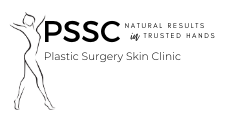Sweaty hands, armpits, or feet? Hyperhidrosis can be uncomfortable or downright embarrassing. There are a plethora of oral, topical and herbal remedies for this condition – but these offer only temporary relief or none whatsoever. The only effective long-term solution for hyperhidrosis is surgical intervention.
Why We Sweat
To understand your options for hyperhidrosis treatment, it’s important to understand why we sweat. First and foremost, everyone sweats. It’s a natural body function for regulating temperature.
Common causes include exercise, eating spicy foods, or being out in the heat.
The sympathetic nervous system controls our sweat glands. Different glands respond to different sweat-inducing stimuli.
- Apocrine Gland – The apocrine gland is responsible for sweat produced by adrenaline. It’s the gland responsible for armpit sweating with axillary hyperhidrosis.
- Eccrine Glands – Emotional stressors like fear and nervousness activate the eccrine glands. Excessively sweaty palms (palmar hyperhidrosis) or feet (plantar hyperhidrosis) are typically the result of the eccrine glands.
So what can you do? While sweat-resistant fabrics and antiperspirants can create temporary relief or a tiny barrier to excessive sweating, this may not be enough for those who experience hyperhidrosis. This, partnered with the harmful chemicals that litter many types of deodorant for women and men, surgical intervention becomes necessary to stop embarrassing and, yes, sticky situations.
Hyperhidrosis Surgery
Surgery is the only long-term solution for hyperhidrosis. Although most of the options involve the surgical interruption of the sympathetic chain, they are not all the same. The different treatments vary depending on the type of hyperhidrosis and the preferred approach.
1. Endoscopic Thoracic Sympathectomy (ETS)
Endoscopic thoracic sympathectomy is a minimally invasive procedure. The surgery removes at least one sympathetic ganglion in the thoracic region. The removal prevents sweating in the targeted region.
ETS is particularly effective for hyperhidrosis of the hands and feet. It has a 98% success rate with palmar hyperhidrosis. For some patients, this surgery is also an option for treating axillary hyperhidrosis.
Other uses for the surgery include treating facial blushing, Raynaud’s disease, and reflex sympathetic dystrophy.
2. Botox
Botox is the only non-surgical treatment on this list. This has the advantage of minimizing downtime and risk. However, it also means that the effects are impermanent. Hyperhidrosis Botox treatments only last up to 6 months.
This treatment is best for axillary hyperhidrosis. The plastic surgeon injects Botox or Dysport, to prevent armpit sweating.
The facial muscle relaxers block neurotransmissions from sympathetic nerves to the skin glands. This effect doesn’t completely stop sweating, but it can effectively reduce excessive sweat in the treatment area.
3. Sweat Gland Removal
Sweat gland removal surgery is only recommended for severe cases of hyperhidrosis. As the name suggests, this process involves the physical removal of the sweat glands. It is effective in treating extreme axillary hyperhidrosis, although it is irreversible.
This treatment can be performed with traditional surgery. Although surgical curettage offers a less invasive option. Consult with your plastic surgeon to determine which approach is best for you.
4. Endoscopic Lumbar Sympathectomy
Endoscopic lumbar sympathectomy is used to treat severe plantar hyperhidrosis. The procedure is performed on the lower spine, disrupting nerve signals from the sympathetic nervous system to the feet. This doesn’t prevent sweating altogether but can make it more manageable.
This process uses a clamping technique, rather than removal of nerves. Due to the important nerves and vessels in the lumbar region, only an experienced, trusted plastic surgeon should be used.
Hyperhidrosis Consultations in Newmarket
If you are suffering from chronic or severe sweating, visit our Newmarket plastic surgery and skin clinic for a consultation. Our expert plastic surgeons will review your case and explain the possible options.
Contact PSSC today to schedule your consultation.

